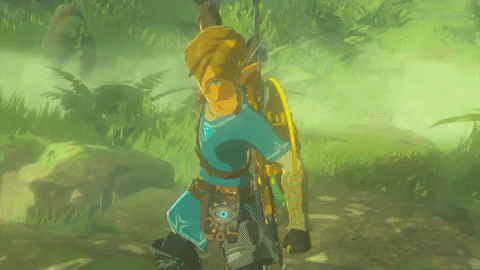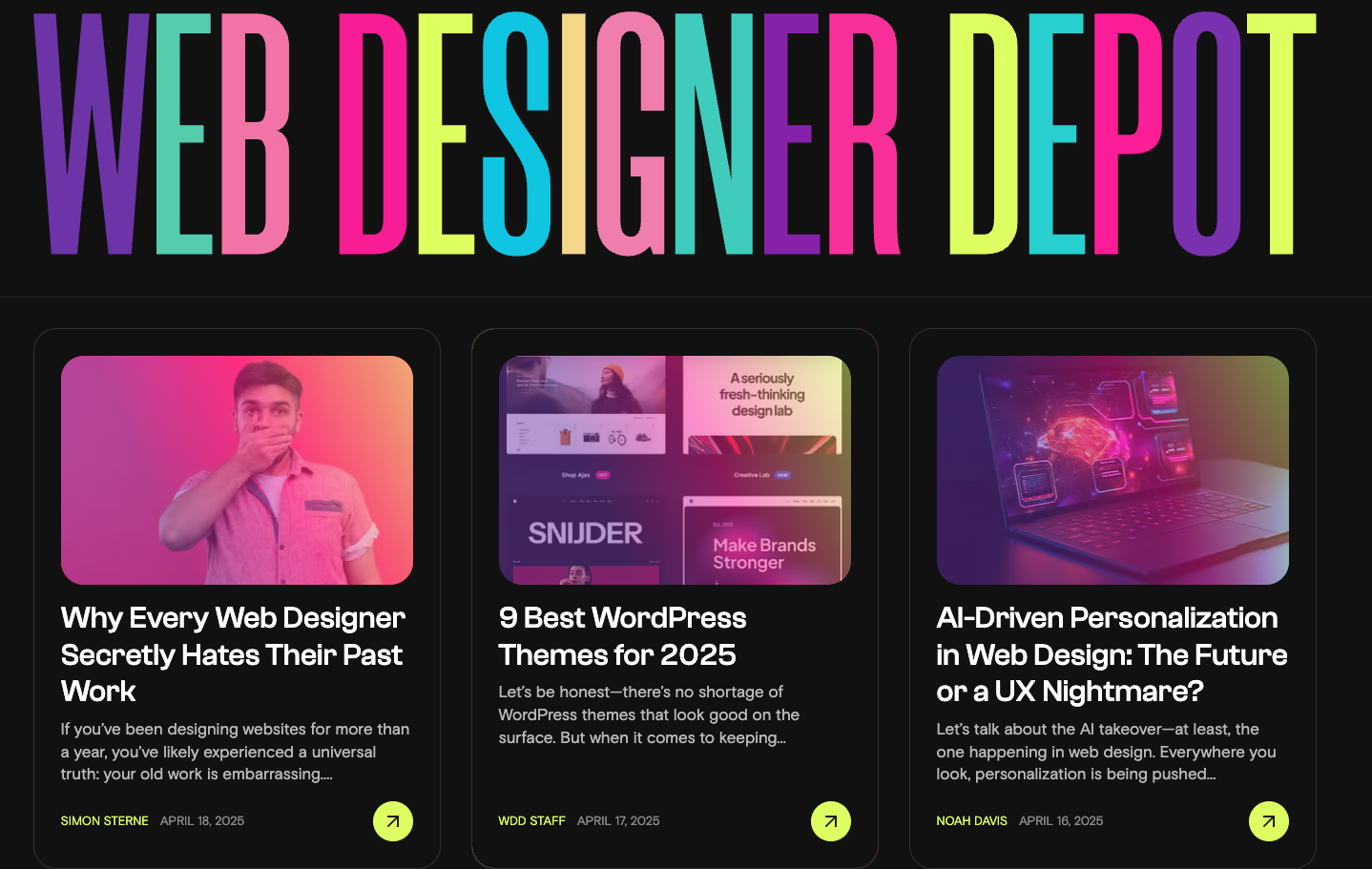Hyperlinks are the foundation of the web and search, those little digital signals that take you exactly to what you mean and why. Linking was the very first code that many of us learned, a way of sharing our favorite spaces online, underlined in blue and don't forget the closing tag. Links are the digital sense of place, the signposts that let us know we're on the web.
Linking is so innate to digital ecosystems that we take the principles, theory and technology of linking for granted. Once someone believes they have learned the right way to link, like understanding the proper way to write a sentence, they don't usually consider other ways to operate unless they pursue a more specialized skill in UX or IA.
But media changes over time because of human behavior and new innovation, digital formats most of all. The "best way" to post on a social platform now is not the same as it was ten years ago. Linking's simplicity and hard ties to textual content has made it slower to change significantly, but that doesn't mean it's immune to change.
The wrench in the hyperlink's elegant mechanics
The fundamental principle of linking assumes both an audience's infinite curiosity and readily available free authoritative content. Links shine with that glossy tech idealism: of course you want to know more about the topic I've linked to but don't have patience to explain. If you click on enough links, you too can be a polymath!
Early demonstrations of linking always heed the Wikipedia model, filled with what we call in-line links. When using in-line links, writers don't even need to interrupt a sentence to clarify their context: if an audience might not know a term or idea, you can just link to a clear explanation and voila! The audience can clickity click their way into knowledge.
In-line links remain a clear, elegant option for web-savvy readers and writers, fantastic for quickly aggregating news, difficult concepts and rickrolls into a single sentence.
But if you've ever watched someone Google the word "Facebook," you know that individuals use digital media extremely differently from you, web reader. The links that stuff a sentence chock-full of valuable information may be considered distracting or extraneous to the busy- or brevity-minded. Consider these when linking:
- Many people of all ages and abilities do not smoothly read and understand web content. Even the most "intuitive" websites require more cognitive strain for many people to navigate smoothly.
- Many people do not prefer reading, let alone reading linked to other reading linked to other reading, ad infinitum.
- Even if you're familiar with linked content, there's an element of "banner blindness" to too many links.
- Reading with links is both solitary and piecemeal. Links are second-, third-, fourth- screens for textual understanding, designed to give the reader galaxy brain filled with trivia but not a thorough comprehension of a concept. The networked experience of reading linked content, as we all know, is neither easy nor pleasant to describe to another person. Linking is digitally, not conversationally, social.
- Linking can be particularly frustrating on mobile, usually from our clumsy hands that always thumb the wrong in-line text.
- With the rise of subscriptions and paywalls, linking to the most authoritative source might not be the most accessible way to inform an audience. If all links are to paid content,
- Strong linking means editorial judgment: researching and finding an authoritative source. If your linking strategy is just Googling a keyword and then linking to the top result, you're just mimicking the algorithm and adding to an echo chamber.
- Improper or distracting linking will drive audiences to another source, particularly if audiences feel misled. There's also the risk of the audience abandoning your content entirely in favor of the link's content.
Rather than considering links as a given or not thinking about them at all, I advise you to link intentionally and contextually.
Five guidelines to adopting a more intentional linking strategy
- Clearly identify links to paid-access or walled content outlets. This is a hard one, especially for all of us who have been linking willy-nilly for the past two decades muttering All Information Should Be Free. The climate is different now, and our bank accounts and informational biases don't value every source equally.
If you have room, indicate the link's home domain, either in a title attribute in your link or with some kind paid identifier, like a ($) symbol. I can't be the only one who gets miffed when she accidentally wastes one of her three monthly Bezos Post clicks on some random clickbaity op-ed from yet another jackhole.* - If you're linking to your own content, choose your anchor text and navigation approach wisely. Limit on-site in-line article links to one per 300 words, as a guideline.
Users will find what the information they need on your site otherwise, and according to this awesome Nielsen-Norman Group article, having too many in-line links coupled with lots of navigation options makes for an extremely confusing experience. - For most websites: link supplementally, not in-line. Unless you are Wikipedia or you are trying to build a highly networked resource within your own content, there's not much of a reason for building an informative page with a bunch of in-line links. Instead, use bullets or footnotes after a paragraph/article that list your linked resources. If someone is genuinely curious about learning more about a specific topic, then link to them.
- Treat linking as a service to the user. Remember that links are endorsements. Link generously to websites and content you like and trust, whose information you value. Do not link to websites with bad user experiences, too many spammy ads, or specious and clickbaity content. Although cookie-based advertising is disappearing, thank goodness, websites with too much tracking tech can still aggressively follow users beyond the website -- so think about what how your reader will experience the content beyond the words themselves.
- Choose a linking approach that works for your audience and matches your data. If your audience is a bunch of readers who love regularly clicking on links, then keep on linking away! But if you regularly check your analytics and find that only one or two links are clicked on your site or email, you might want to scale back on the in-line links and focus on the content itself.
Other resources on quality linking:
- From NN Group: Deep linking, writing better links and duplicate links
- A lovely explainer of mobile design: guidelines for our giant fingers on tiny screens from dev agency OutSystems.
- Want to analyze links on any page, any domain anywhere? Check out SEO agency Northcutt's handy link analysis tools.
*For the record, I've been sure to make the Amazon warehouse injury story one of those three WaPo clicks for June.
10 "linking for SEO" myths based on rules that have changed in the past few years
As you probably know, Google's search ranking—along with pretty much every other web search engine—is link-driven. Websites with more links are considered more authoritative and ranked higher than those with fewer. Links from high-authority websites are more valuable than those from low-authority websites. But because folks have spent decades trying to game this system and Google is smart enough to evolve, linking has changed significantly in the past decade.
Clients talk a lot about linking "for SEO," usually because they are still using best practices from ten years ago because why would you follow every algorithm and tactical change? It's a lot, I admit.
Best practices for linking have changed significantly since 2015, so here are some myths that have shifted or were never true in the first place:
- Myth 1: Links from anywhere are good! Hopefully you know this isn't true, but links from spammy sites or links that you just straight-up bough can hurt your reputation in search engines. Bad links can take months to clean up.
- Myth 2: Links to anywhere are good! Links are good for the websites you link to, for sure, but not so true for your own site. Search engines don't evaluate on how many links off-site you have on a single page, and it doesn't make your site more authoritative. Linking to too many offsite sources just makes your content a big, confusing mess.
- Myth 3: Google values links from social media as much as links from other websites. Thank heavens no. Social virality can send Google signals for sure, but Google can only crawl some social platforms and absolutely does not value those links as highly as web links.
- Myth 4: Sharing links with a large social/email audience is has the same SEO value as a link from a widely read website. Nopers. Rule of thumb: audiences don't migrate across channels, and web linking from social doesn't have nearly as much SEO value as a link from a good website. If the email platform is also a website, like Substack, an email inclusion can have some value, but Substack isn't SEO-ified as yet, so not really. Link sharing in other channels has awareness and audience growth value, of course, but not "for SEO."
- Myth 5: Paid ads are great SEO links. No. Like viral social links, search engine crawlers might register a heavily advertised site more frequently, but the SEO equity you might gain from a paid campaign will more likely be from rising branded search.
- Myth 6: Press release links are great for SEO. Used to be true, but hasn't been true since 2013. Press release links are considered no-follow, which means that Google crawlers don't follow them and they don't pass significant search equity. Sending a press release every time you release a blog post or a staff bio is a waste of resources and a good way to never be linked anywhere ever. I speak for every editor when I say: please do not send press releases unless you have actual news to share.
- Myth 7: Press releases don't matter for SEO. Also not true! If press releases lead to a news story—thus fulfilling the primary function of a well-written press release—that link from an authoritative news source is bananas good for SEO. The relationship-building and quality Press Release part of PR should be your primary backlink strategy! (Pro tip: Make sure to include your link in the email for your press release as well as in the press release content itself so that it's easily accessible for writers to find. And by all means, don't send the press release as an attachment it's 2021 FFS.)
- Myth 8: Guest posts are great ways to get SEO links. The growth hacking guest posting days are long in the past, friends. I'm sure you can still find some junior marketers to host your guest post, but business-focused bloggers/newsletterers/editors aren't looking for low-quality cross-promo content. It's fine to introduce others to your content or ask for a relevant collaboration, but directly asking for links without prior connection is gauche.
- Myth 9: It's important to stuff keywords in anchor text. Nope. Anchor text should be clear for the user, but Google can also understand context from other written text on the page. If a keyword doesn't make sense in a certain context, then don't use it.
- Myth 10: Every website has a few bad links. Right up there with "every website has tons of fake traffic," this is just straight-up not true and don't let any shady bros tell you otherwise. Every website does not have bad links. Most websites don't have bad link profiles, and most websites don't get manual penalties. It's your responsibility as the website owner to keep your link profile refreshed and clean. Don't do shady shit because you have seen someone else do the same.
And with that: happy linking, y'all!

Hand-picked related content








